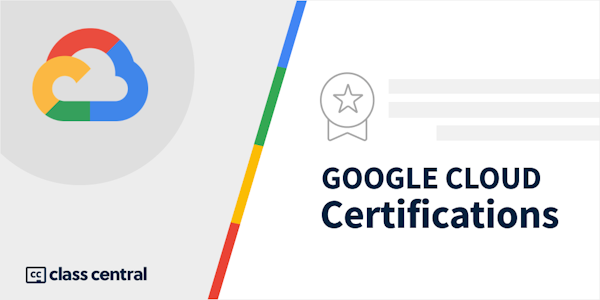Overview
It is becoming harder and harder to maintain a technology stack that can keep up with the growing demands of a data-driven business. Every Big Data practitioner is familiar with the three V’s of Big Data: volume, velocity, and variety. What if there was a scale-proof technology that was designed to meet these demands?
Enter Google Cloud Dataflow. Google Cloud Dataflow simplifies data processing by unifying batch & stream processing and providing a serverless experience that allows users to focus on analytics, not infrastructure. This specialization is intended for customers & partners that are looking to further their understanding of Dataflow to advance their data processing applications.
This specialization contains three courses:
Foundations, which explains how Apache Beam and Dataflow work together to meet your data processing needs without the risk of vendor lock-in
Develop Pipelines, which covers how you convert our business logic into data processing applications that can run on Dataflow
Operations, which reviews the most important lessons for operating a data application on Dataflow, including monitoring, troubleshooting, testing, and reliability.
Syllabus
Course 1: Serverless Data Processing with Dataflow: Foundations
- Offered by Google Cloud. This course is part 1 of a 3-course series on Serverless Data Processing with Dataflow. In this first course, we ... Enroll for free.
Course 2: Serverless Data Processing with Dataflow: Develop Pipelines
- Offered by Google Cloud. In this second installment of the Dataflow course series, we are going to be diving deeper on developing pipelines ... Enroll for free.
Course 3: Serverless Data Processing with Dataflow: Operations
- Offered by Google Cloud. In the last installment of the Dataflow course series, we will introduce the components of the Dataflow operational ... Enroll for free.
- Offered by Google Cloud. This course is part 1 of a 3-course series on Serverless Data Processing with Dataflow. In this first course, we ... Enroll for free.
Course 2: Serverless Data Processing with Dataflow: Develop Pipelines
- Offered by Google Cloud. In this second installment of the Dataflow course series, we are going to be diving deeper on developing pipelines ... Enroll for free.
Course 3: Serverless Data Processing with Dataflow: Operations
- Offered by Google Cloud. In the last installment of the Dataflow course series, we will introduce the components of the Dataflow operational ... Enroll for free.
Courses
-
This course is part 1 of a 3-course series on Serverless Data Processing with Dataflow. In this first course, we start with a refresher of what Apache Beam is and its relationship with Dataflow. Next, we talk about the Apache Beam vision and the benefits of the Beam Portability framework. The Beam Portability framework achieves the vision that a developer can use their favorite programming language with their preferred execution backend. We then show you how Dataflow allows you to separate compute and storage while saving money, and how identity, access, and management tools interact with your Dataflow pipelines. Lastly, we look at how to implement the right security model for your use case on Dataflow. Prerequisites: The Serverless Data Processing with Dataflow course series builds on the concepts covered in the Data Engineering specialization. We recommend the following prerequisite courses: (i)Building batch data pipelines on Google Cloud : covers core Dataflow principles (ii)Building Resilient Streaming Analytics Systems on Google Cloud : covers streaming basics concepts like windowing, triggers, and watermarks >>> By enrolling in this course you agree to the Qwiklabs Terms of Service as set out in the FAQ and located at: https://qwiklabs.com/terms_of_service <<<
-
In this second installment of the Dataflow course series, we are going to be diving deeper on developing pipelines using the Beam SDK. We start with a review of Apache Beam concepts. Next, we discuss processing streaming data using windows, watermarks and triggers. We then cover options for sources and sinks in your pipelines, schemas to express your structured data, and how to do stateful transformations using State and Timer APIs. We move onto reviewing best practices that help maximize your pipeline performance. Towards the end of the course, we introduce SQL and Dataframes to represent your business logic in Beam and how to iteratively develop pipelines using Beam notebooks.
Taught by
Google Cloud Training




